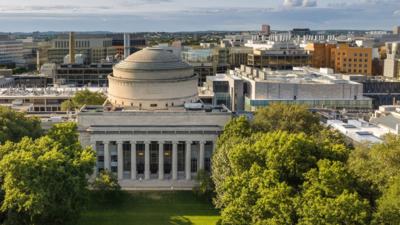ARTICLE AD BOX

For decades, the Ivy League has been synonymous with academic prestige, shaping the perception of what it means to attend a “top” university in the United States. Yet the evolving landscape of higher education tells a more nuanced story.
Today, excellence is no longer confined to eight elite campuses along the Northeast corridor. The latest Forbes America’s Top Colleges list underscores this transformation, spotlighting institutions that combine rigorous academics with affordability, innovation, and long-term career outcomes.What emerges is a portrait of higher education that transcends traditional hierarchies: public universities offering world-class opportunities at accessible prices, liberal arts colleges producing graduates who command enviable salaries, and research-driven institutions fueling breakthroughs while delivering strong returns on investment.
Together, they challenge the notion that success is synonymous with an Ivy League diploma.This year’s rankings illuminate a critical truth—students and families must look beyond the sheen of prestige to evaluate what truly matters: financial value, career readiness, and transformative learning experiences. Here are the standout names reshaping the definition of top-tier education in America.
Massachusetts Institute of Technology (MIT), MA
- Type: Private, Not-for-Profit
- Average Cost: $58,331
- Average Student Debt: $12,071
- Median 20-Year Alumni Salary: $196,900
- Grade: A+
MIT leads the rankings with strong alumni earnings and retention rates.
Known for its STEM focus and entrepreneurship, it sets a high standard for outcomes.
University of California, Berkeley, CA
- Type: Public
- Average Cost: $25,951
- Average Student Debt: $6,529
- Median 20-Year Alumni Salary: $170,100
Berkeley ranks as the top public institution. It delivers access at comparatively lower costs while maintaining strong graduate outcomes.
Williams College, MA
- Type: Private, Not-for-Profit
- Average Cost: $64,176
- Average Student Debt: $8,171
- Median 20-Year Alumni Salary: $173,900
- Grade: A+
Williams demonstrates the impact of liberal arts education, with close student-faculty engagement and competitive alumni earnings.
Johns Hopkins University, MD
- Type: Private, Not-for-Profit
- Average Cost: $58,456
- Average Student Debt: $10,600
- Median 20-Year Alumni Salary: $146,200
Johns Hopkins combines global research strength with solid undergraduate outcomes, particularly in medicine and public policy.
Vanderbilt University, TN
- Type: Private, Not-for-Profit
- Average Cost: $57,723
- Average Student Debt: $11,345
- Median 20-Year Alumni Salary: $151,500
- Grade: A
Vanderbilt continues to climb in national rankings, with a focus on academic quality, student support, and post-graduate results.ConclusionThe 2025–2026 Forbes rankings make one fact abundantly clear: the geography of excellence is expanding. From public universities to liberal arts colleges, America’s higher education system is more diverse in strength than ever before. For students and families, the rankings serve as a reminder to look beyond the Ivy League and toward institutions that not only carry prestige but also deliver tangible outcomes, affordability, and transformative experiences.



.png)
.png)
.png)
















 3 hours ago
2
3 hours ago
2









 English (US) ·
English (US) ·